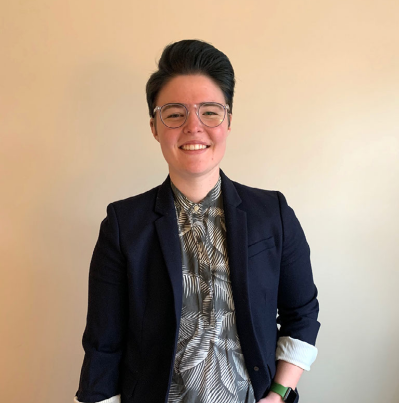
Teaming Up With Teachers
May 10, 2021
When you think about the different members that make up an IEP team, the classroom teacher is often the one who can provide the most holistic insight for a student. The classroom teacher interacts with a student in almost every environment in a school building, whether it be the classroom, the hallway, lunch, recess, gym, or even the bus. Chances are, if there is anything to know about a student, the teacher knows it. Additionally, the classroom teacher often serves as the bridge between school and home. When there is a change at home, whether it’s a rough night of sleep, a change in medication, a change in routine, or a change in skill, the classroom teacher is usually one of the first people to be informed. This is why the classroom teacher is such a valuable member of an interdisciplinary team. Here are some tips that I have found helpful while I’ve worked to create collaborative relationships with some of my classroom teachers!
-
Provide Classroom-Based Services: One of the best ways that I’ve found to engage more frequently with classroom teachers is to make sure that I have time in their classrooms. This works especially well for my preschool population. The more time that I spend in the classroom working with students, the better the classroom teacher gets to know me, what I do, and what information helps me be more successful with our students. The best part of incorporating time in the classroom into my service delivery is that collaborating with the teacher doesn’t add extra time into my schedule - that opportunity to collaborate is built in! For some of my students, I write their IEPS so that I can push into their classroom multiple times a week, especially if I have a collaborative relationship established with that teacher and know what push-in looks like in that classroom. For teachers that I am unfamiliar with, or if I am not confident that the classroom environment is well suited for push-in services, I start small. Once a month 15-20 minutes in the classroom allows me to gain insight, address carryover, and begin to build that collaborative relationship. Placing yourself in the classroom environment also gives you insight into skills that are creating the biggest barrier to a student participating in their curriculum, or functioning in the classroom. Oftentimes, these barriers can be frustrating for a classroom teacher. Maybe it’s a skill that you know how to scaffold for, or maybe it wasn’t on your radar yet. When you work with the teacher in determining what skills will make a big impact in the classroom, you build buy-in from the teacher. That buy-in will help create a collaborative relationship with that teacher and help keep that classroom door open for you.
-
Know the Curriculum: For a lot of us, Common Core standards are part of the foundation to what we do and are used to justify educational impact. They are the guidelines for what skills students are expected to demonstrate in any given grade. When students aren’t demonstrating the skills necessary to meet those standards, they provide us with insight into what we can target within our therapy. In my experience, classroom teachers are the experts on academic standards, whether they be Common Core, TEKS or state specific standards. They understand how standards build upon each other from year to year, so working in tandem with the classroom teacher allows us to determine where the breakdowns occur and what foundational skills need to be established in order for that student to be successful in the classroom. Additionally, academic standards are important because they are what a classroom teacher uses to measure success and communicate that success to parents via report cards. For some students, these standards set a very high bar for what success looks like on paper. The curriculum is what your student uses to determine how successful they are. It’s the homework they turn in, the tests they take, and the grades that get sent home. In working together with the classroom teacher, getting a little creative, and providing the necessary accommodations and supports, you can help your student achieve goals outside of their IEP.
-
Prioritize Needs: When I first started working, I would find myself thinking in circles when it came to deciding what to target in a student’s upcoming IEP. For some of my students, I could come up with lists of 8 to 10 goals because so much of what I had learned in school was regarding what textbook typical development should look like. When I started collaborating with classroom teachers and presented them with these lists, their insight helped me determine what issues required my expertise the most. Some of the listed goals were not even skills that the majority of the class targeted. Our caseloads are big and our time is limited, so use your teacher’s ability to realistically benchmark your student to not only a typical student, but to the rest of their classroom peers. These conversations can provide you valuable insight about where your time and expertise is best spent. And if your classroom teacher is a true MVP, the goals that aren’t being targeted by you will end up getting a little extra attention from them.
-
Create Continuity: SLPs are always thinking about generalization of skills, but how can we expect skills to generalize when they are only ever targeted by us in our speech room? Developing a collaborative relationship with the classroom teacher not only invites you into the classroom environment, but it increases the likelihood that your strategies that help students be successful will continue to be there even when you’re not. This relationship provides opportunities to model strategies, to unify the language that is being used, and to build the confidence of the classroom teacher that they are capable of meeting the student’s speech and language needs because of our guidance and support. Hype those teachers up!
The ultimate goal of interdisciplinary practice is to create continuity across team members and across environments so that a student has the opportunity to be as successful as possible. Teachers play a key role in that endeavor and can end up being some of the strongest allies for a student. Not every teacher will make you feel like you have a space in their classroom, and some teachers will take your expertise with a grain of salt, but it’s our responsibility to break down as many barriers as we can for our students. So get out of your comfort zone and into the classroom!
About the Author

Sarah B. Bromley M.S. CC-SLP, has a blast working with the entire educational age span from preschool through high school. Sarah received her Master’s degree from Marquette University in 2018. When she is not wearing her speech hat, she loves to grab the biggest cup of coffee from her local coffee shop while taking her dog Ziggy for a walk around the lake. Feel free to email Sarah at sbromley3232@gmail.com



